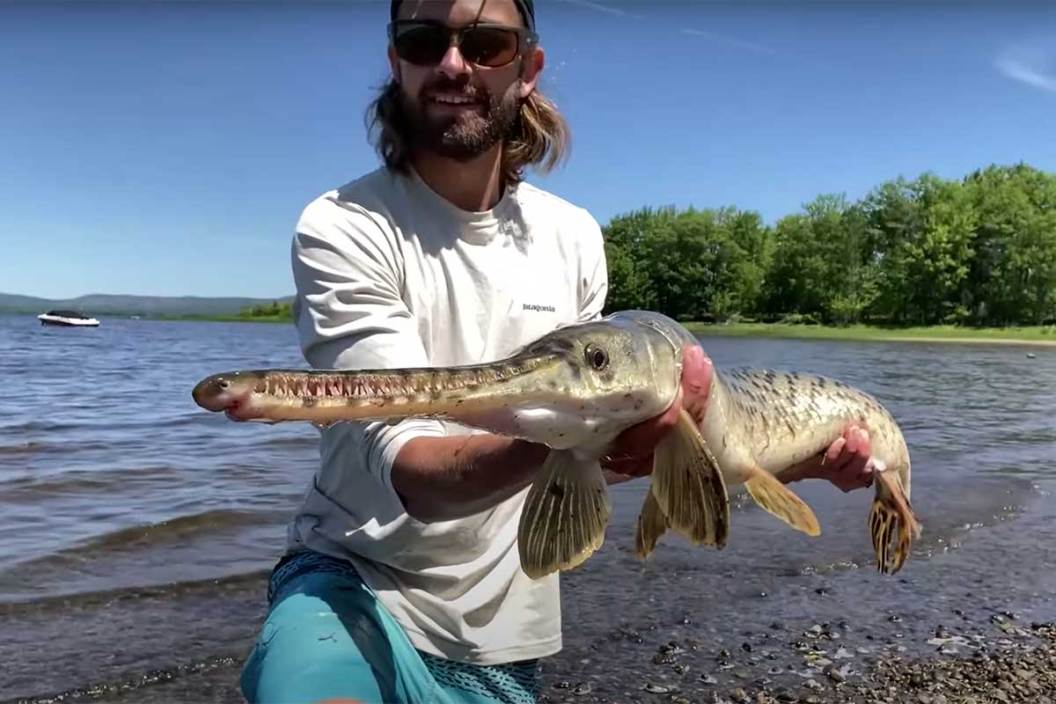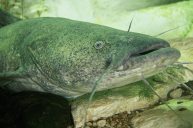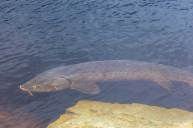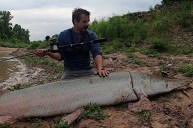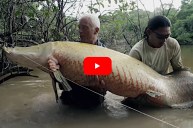Here's what to know and where to go for this unique bony fish.
Longnose gar—also known as needlenose gar, billfish, or billy gar—got their scientific name, lepisosteus osseus, meaning "bony scale" for the ganoid scales on their olive-brown bodies. Their long snouts measure 10 times their width, and a row of sharp teeth lines the upper jaw. This narrow snout distinguishes them from alligator gar and other fish species in the gar family.
Interestingly enough, they have a swim bladder that allows them to breathe both air and water.
Depending on where they live, longnose gar will feed on small crustaceans, menhaden, sunfish, shad, catfish, and other game fish. Able to reach around 50 pounds as adults, the longnose gar's only real predators are humans and the American alligator.
Longnose Gar Fishing
Longnose gar can be found throughout the eastern United States and into Canada. The Mississippi River holds a concentrated population as well as fisheries in Texas, Florida, Missouri, New Mexico, and the Carolinas.
Longnose gar are typically found in sluggish backwaters, brackish water near the coast, or other shallow waters. They move toward the mouths of bayous in the afternoon and evening in search of food and head back into lower-salinity waters in the morning.
Although these freshwater fish spawn in April, the summer months are usually the best time to hook longnose gar, when they're more active and easier to spot in shallow water. You'll want to invest in a good pair of polarized sunglasses before you head out.
Anglers see the most success baitfishing topwater with heavyweight tackle, including 80-pound test line and a durable rod-reel combo.
These incredibly powerful fish will jump and fight when hooked, so be prepared for a tough challenge and beware of sharp teeth.
Bowfishing for longnose gar is certainly growing in popularity, with many sportsmen nabbing monster gar in Texas rivers, Florida bayous, and other southern waters that provide good habitat and ample food sources. Will you be the next angler to pull a longnose out of
NEXT: TROUT FISHING IN PENNSYLVANIA: EVERYTHING TO KNOW
